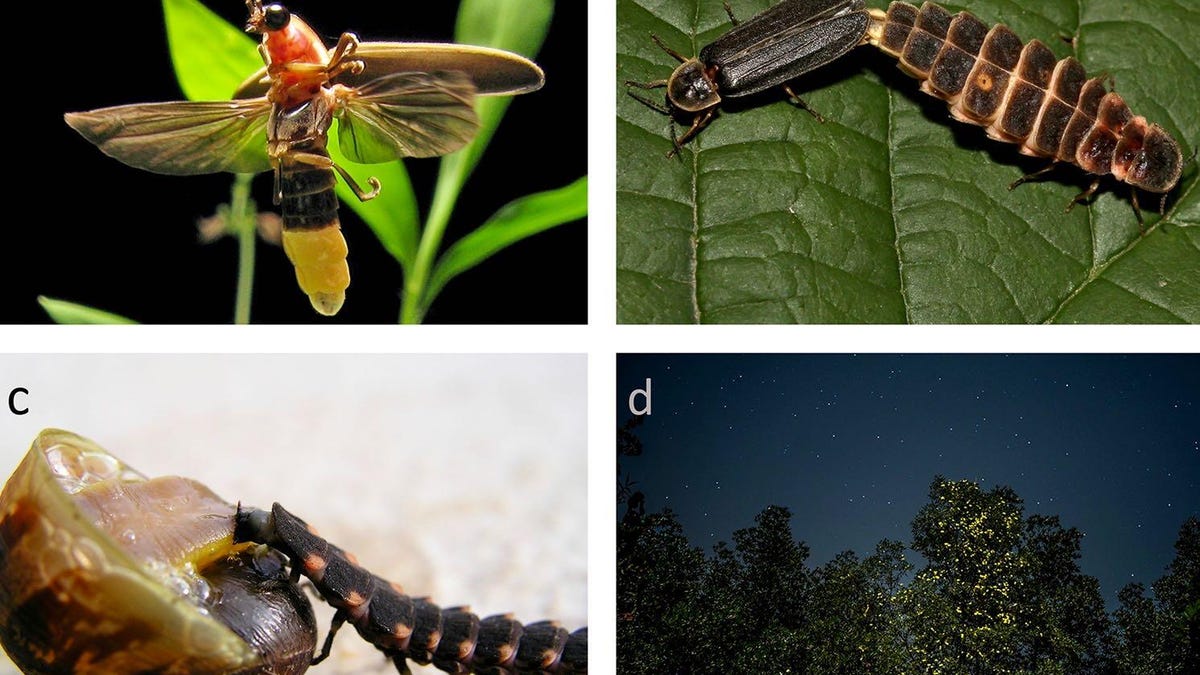Fireflies worldwide are at risk of extinction, and humans are to blame
A new study warns of three major threats to the beloved bioluminescent bugs.

A variety of fireflies. Fireflies often attract tourism, which can sometimes lead to loss of habitat.
Chasing fireflies on a warm summer night might become a rare childhood memory if humans don't take heed. There are over 2,000 different firefly species around the world, but their populations are dwindling due to artificial light pollution, pesticides and decreasing habitat size, according to a new study published in the journal Bioscience.
A team of Tufts University-led researchers surveyed scientists and conservationists about the threats to firefly populations around the world. According to the study, one of the main threats to fireflies in east Asia and South America is artificial light. Street lamps and building lights disrupt the insects' natural biorhythms and mating rituals.
Fireflies (which are actually beetles) light up to attract mates, but they can easily mistake human-made lights as potential partners. It doesn't help that adult fireflies typically live only a few days, which doesn't give them long to find a mate.
Humans destroying the insects' natural habitats pose another threat. During its larval phase, the Malaysian firefly (pteroptyx tener) lives in riverside shrubs that are often pulled out for human-made fish farms.
In Europe, Lampyris iberica fireflies are finding less food to eat due to the growing urbanization of what were once orchards and farmlands. In Malaysia, adult pteroptyx fireflies that usually prefer to mate in specific trees next to rivers are having to find new courtship areas because the trees are being knocked down for homesteads.
No study on dwindling insect populations would be complete without mentioning the impact of pesticides.
"Organophosphates and neonicotinoids are designed to kill pests, yet they also have off-target effects on beneficial insects," the study says.
Clockwise, from upper left: In Malaysia, clearing of riverbank mangroves along the Selangor River for agriculture destroys trees used by Pteroptyx adults for courtship. In Delaware, residential development threatens declining populations of Photuris bethaniensis. A global map based on satellite data. colors indicate ratio of artificial to natural sky brightness.
The study also looked at the effects of climate change, tourism, invasive species and water pollution.
On a positive note, while fireflies around the world seem to be suffering from the previously mentioned issues, Big Dipper fireflies living in the US happen to be thriving. "Those guys can survive pretty much anywhere," Sara Lewis, Tufts University biologist and lead author of the study, told Science Alert.
The study urges countries in danger of dwindling firefly populations to take measures to preserve suitable habitats, minimize light pollution, reduce use of insecticides and develop better guidelines for sustainable tourism around known firefly areas.

